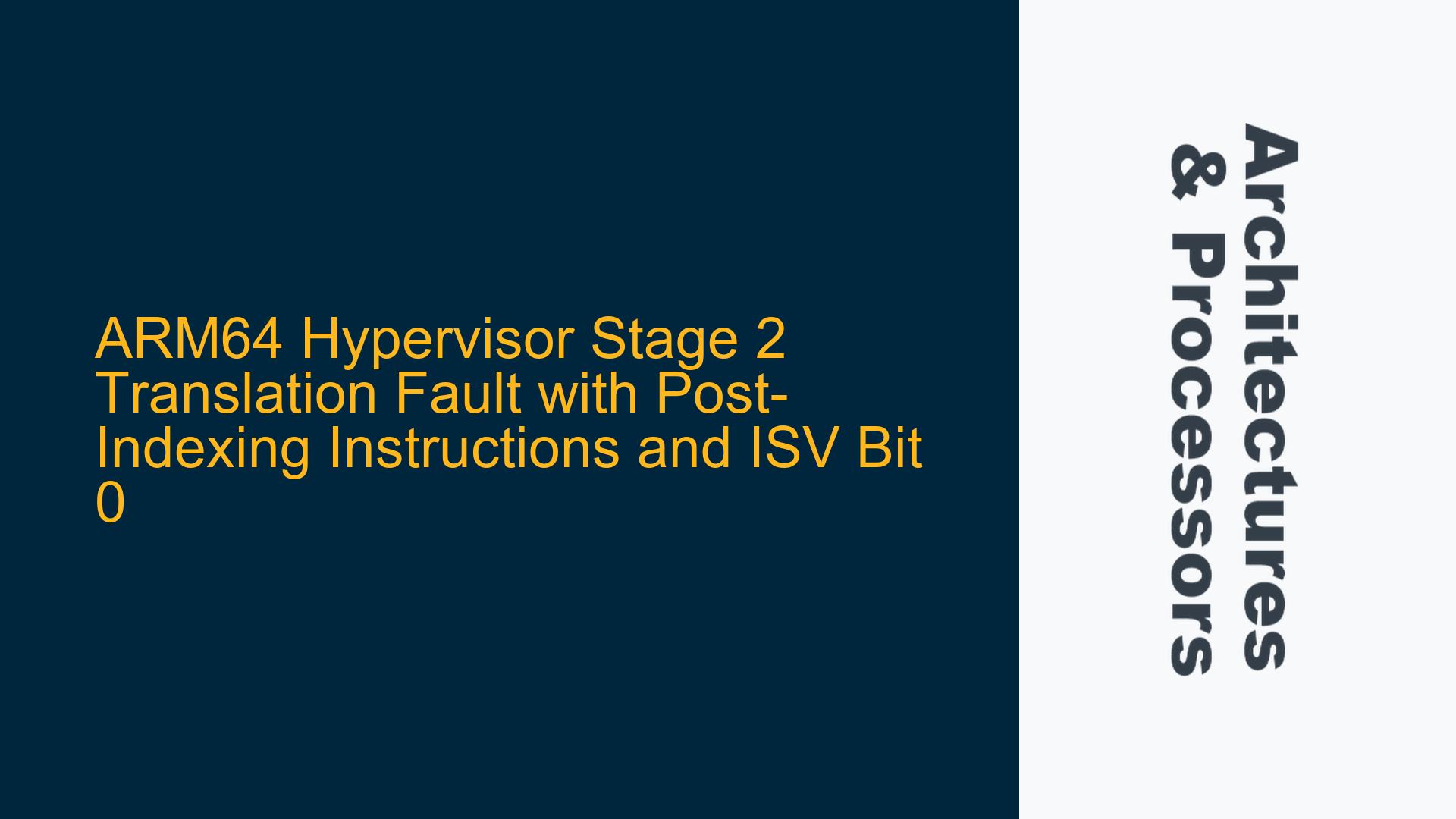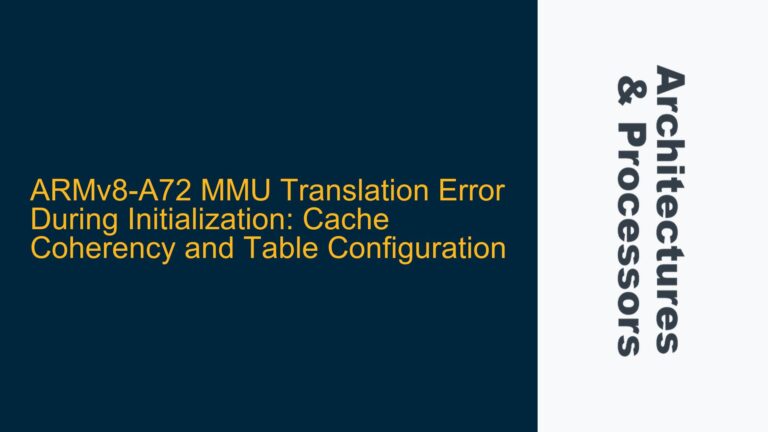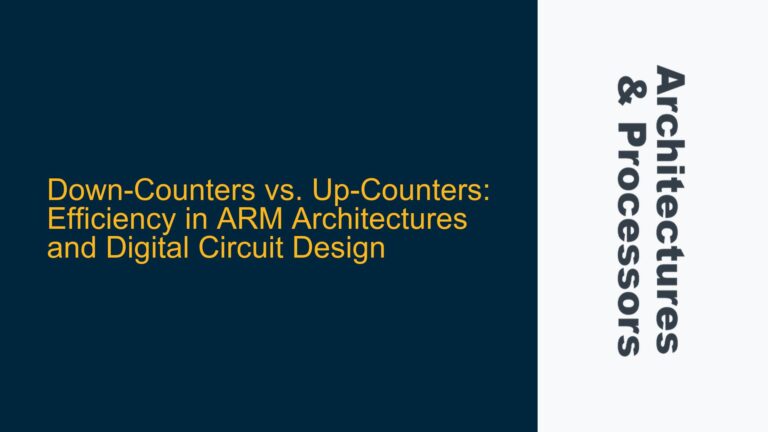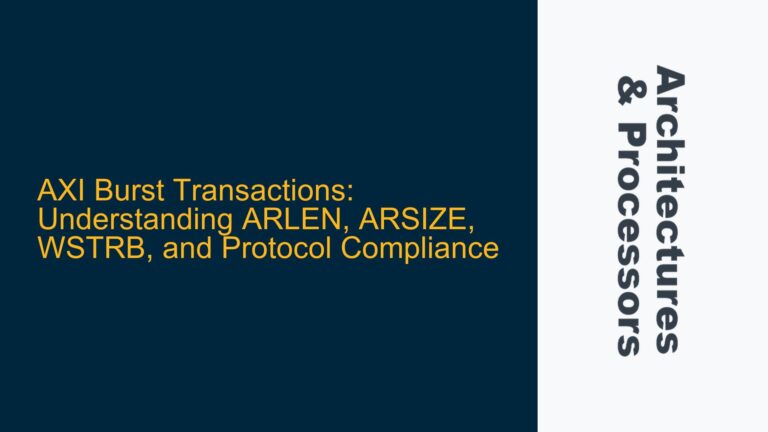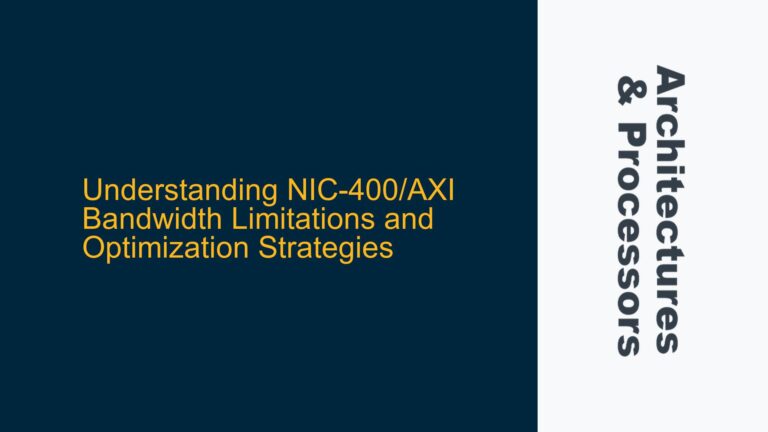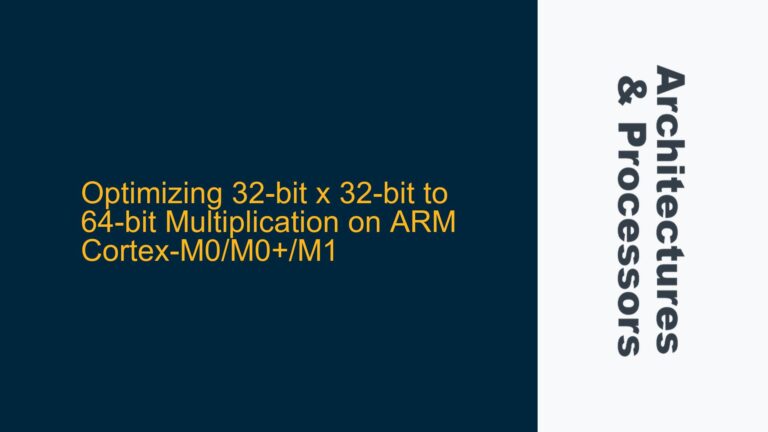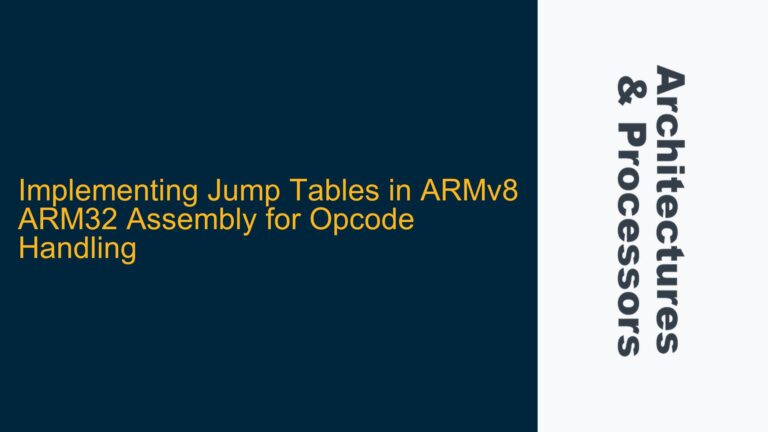ARM64 Hypervisor Stage 2 Translation Fault with Post-Indexing Instructions and ISV Bit 0
When virtualizing an ARM64 system, a hypervisor is responsible for managing the memory and execution of guest operating systems. One critical aspect of this management is handling memory access faults, particularly those that occur during Stage 2 translation. Stage 2 translation is the process by which the hypervisor translates guest virtual addresses to physical addresses. However, in certain scenarios, particularly when using post-indexing load/store instructions, the hypervisor may encounter a Stage 2 translation fault with the Instruction Syndrome Valid (ISV) bit in the Exception Syndrome Register (ESR_EL2) set to 0. This condition prevents the hypervisor from decoding the faulting instruction, making it challenging to handle the fault appropriately.
The issue arises when a guest operating system attempts to access memory outside of its allocated memory slot (memslot) using post-indexing load/store instructions. These instructions, such as ldr x2, [x1], #8 or str w2, [x1], #-4, are commonly used in bare-metal systems for efficient memory access and pointer updates. However, in a virtualized environment, these instructions can lead to a Stage 2 translation fault with the ISV bit set to 0, indicating that the syndrome information in the ESR_EL2 register is invalid. This prevents the hypervisor from determining the exact nature of the faulting instruction, complicating the fault handling process.
The root cause of this issue lies in the architectural design of the ARM64 processor and the way it handles Stage 2 translation faults for post-indexing instructions. When a Stage 2 translation fault occurs, the processor captures information about the fault in the ESR_EL2 register. However, for certain types of instructions, including post-indexing load/store instructions, the ISV bit may be set to 0, indicating that the syndrome information is not valid. This design decision has implications for hypervisor implementations, as it limits the hypervisor’s ability to decode and handle the faulting instruction.
Understanding why this happens requires a deep dive into the ARM64 architecture, particularly the handling of Stage 2 translation faults and the role of the ISV bit in the ESR_EL2 register. Additionally, it is important to consider the design considerations that led to this behavior and how hypervisors can work around these limitations to ensure reliable operation in virtualized environments.
Memory Access Faults with Post-Indexing Instructions and Invalid Syndrome Information
The core issue revolves around the handling of memory access faults in a virtualized ARM64 environment, particularly when post-indexing load/store instructions are used. Post-indexing instructions are a type of load/store instruction that updates the base register after the memory access. For example, the instruction ldr x2, [x1], #8 loads the value at the memory address contained in register x1 into register x2, and then increments x1 by 8. These instructions are efficient for sequential memory access but can lead to complications in a virtualized environment.
When a guest operating system attempts to access memory outside of its allocated memslot, a Stage 2 translation fault occurs. The hypervisor is responsible for handling this fault, but the process is complicated when the ISV bit in the ESR_EL2 register is set to 0. The ISV bit indicates whether the syndrome information in the ESR_EL2 register is valid. When ISV is 0, the syndrome information is not valid, and the hypervisor cannot determine the exact nature of the faulting instruction.
The ARM Architecture Reference Manual (ARM DDI 0487G.a) provides some insight into this behavior. According to the manual, the ISV bit is set to 1 only when the fault is generated by specific instructions, such as those related to the FEAT_LS64 feature (e.g., ST64BV, ST64BV0, ST64B, or LD64B). For other instructions, including post-indexing load/store instructions, the ISV bit may be set to 0, indicating that the syndrome information is not valid.
This behavior has significant implications for hypervisor implementations. Without valid syndrome information, the hypervisor cannot determine the exact instruction that caused the fault, making it difficult to handle the fault appropriately. This is particularly problematic when the faulting instruction is a post-indexing load/store instruction, as these instructions are commonly used in bare-metal systems and may be present in guest operating systems.
The lack of valid syndrome information also complicates the process of emulating the faulting instruction. In many cases, the hypervisor may need to emulate the instruction to ensure that the guest operating system continues to function correctly. However, without valid syndrome information, the hypervisor cannot accurately emulate the instruction, leading to potential errors or instability in the guest operating system.
Architectural Design Considerations and Hypervisor Limitations
The behavior of the ISV bit in the ESR_EL2 register is a result of architectural design considerations in the ARM64 processor. The ARM architecture is designed to provide efficient and flexible memory access, with a wide range of load/store instructions that can be used in different scenarios. However, this flexibility comes with trade-offs, particularly in virtualized environments.
One of the key design considerations is the balance between hardware complexity and software flexibility. The ARM64 architecture is designed to minimize hardware complexity while providing sufficient flexibility for software to handle a wide range of scenarios. This design philosophy is evident in the handling of Stage 2 translation faults, where the hardware provides basic information about the fault, but leaves the detailed handling to software (i.e., the hypervisor).
The decision to set the ISV bit to 0 for certain instructions, including post-indexing load/store instructions, is likely a result of this design philosophy. By not providing detailed syndrome information for these instructions, the hardware reduces complexity and improves performance. However, this decision places additional burden on the hypervisor, which must handle the fault without complete information about the faulting instruction.
Another design consideration is the need to support a wide range of use cases, including bare-metal systems, virtualized environments, and systems with different levels of hardware support. The ARM64 architecture is designed to be flexible enough to support these use cases, but this flexibility can lead to challenges in specific scenarios, such as virtualized environments with post-indexing load/store instructions.
The limitations of the hypervisor in handling Stage 2 translation faults with invalid syndrome information are a direct result of these architectural design considerations. The hypervisor must work within the constraints of the hardware, which may not provide all the information needed to handle the fault effectively. This can lead to challenges in ensuring reliable operation in virtualized environments, particularly when dealing with guest operating systems that use post-indexing load/store instructions.
Implementing Workarounds for Handling Stage 2 Translation Faults with Invalid Syndrome Information
Given the architectural limitations and the challenges they pose for hypervisor implementations, it is important to consider potential workarounds for handling Stage 2 translation faults with invalid syndrome information. These workarounds can help ensure that the hypervisor can handle the fault appropriately, even when the ISV bit is set to 0.
One potential workaround is to use the Fault Address Register (FAR_EL2) and the Exception Link Register (ELR_EL2) to gather additional information about the fault. The FAR_EL2 contains the faulting address, which can be used to determine the memory region that caused the fault. The ELR_EL2 contains the address of the faulting instruction, which can be used to disassemble the instruction and determine its type.
By combining the information from the FAR_EL2 and ELR_EL2, the hypervisor can infer the nature of the faulting instruction, even when the ISV bit is set to 0. For example, if the faulting address is in an MMIO region, and the ELR_EL2 points to a post-indexing load/store instruction, the hypervisor can infer that the fault was caused by a post-indexing instruction accessing an MMIO region.
Another potential workaround is to use software-based instruction decoding to determine the nature of the faulting instruction. This approach involves disassembling the instruction at the address contained in the ELR_EL2 and determining its type based on the opcode and operands. While this approach requires additional software complexity, it can provide the hypervisor with the information needed to handle the fault appropriately.
In some cases, it may be necessary to modify the guest operating system to avoid using post-indexing load/store instructions in scenarios where they could lead to Stage 2 translation faults. This approach can be challenging, particularly for legacy operating systems, but it can help reduce the likelihood of encountering faults with invalid syndrome information.
Finally, it is important to consider the role of hardware features such as FEAT_LS64 in addressing these challenges. The FEAT_LS64 feature provides additional support for handling Stage 2 translation faults, including setting the ISV bit to 1 for specific instructions. By leveraging these hardware features, hypervisors can improve their ability to handle faults with valid syndrome information, reducing the need for complex workarounds.
In conclusion, handling Stage 2 translation faults with invalid syndrome information in a virtualized ARM64 environment is a complex challenge that requires a deep understanding of the ARM64 architecture and careful consideration of potential workarounds. By leveraging the information available in the FAR_EL2 and ELR_EL2 registers, using software-based instruction decoding, and considering hardware features such as FEAT_LS64, hypervisors can improve their ability to handle these faults and ensure reliable operation in virtualized environments.
